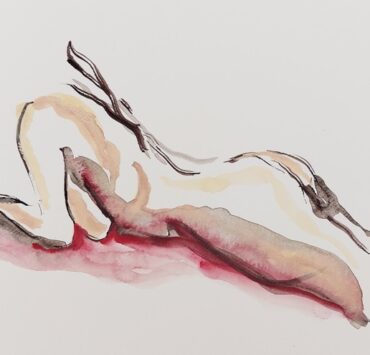Christmas markets set up in numerous parts of the city and the Christmas preparations have become diverse, international events, just like in any European city. And so they should be.
Yet in times gone by, Christmas would be unimaginable without the Old Hungarian Christmas traditions linked to the holidays in the countryside just as much as in the capital.
Saint Lucy’s (Luca) chair and witchcraft
December’s folk customs start on Luca’s day. According to the legend, on 13 December as winter evenings became longer and the darkness deeper, Saint Lucy turned into a witch. To repel witches, people stuck garlic into keyholes, thrust knives into doorjambs, drew crosses on the door with garlic and placed broomsticks to form a cross.
It was not allowed to borrow or lend anything on this day to avoid anything getting into the hands of the witches. Girls would predict who their future fiancé would be. According to the custom, women were not allowed to work, since if they weaved or sewed on Luca’s day the chickens would not lay eggs. This is one of the most unique Old Hungarian Christmas traditions indeed.
A bejegyzés megtekintése az Instagramon
The custom of wonderful wreaths
Advent begins on the fourth Sunday before Christmas and lasts until 24 December, which is also the start of the church year. The four weeks of Advent constitute the period of preparing for Christmas. Making an Advent wreath is one of the relatively new Hungarian Christmas traditions: as Christmas approaches every Sunday, one more candle is lit.
A bejegyzés megtekintése az Instagramon
“Regölés”, or singing good wishes
One of our favourite Hungarian Christmas traditions of “regölés” is connected to the period after Christmas: from 26 December, the name day of István (Steven), until New Year’s Day, singers called “regősök” sing songs and give their good wishes to the residents of the homes they visit. In actual fact, “regölés” was a custom of singing about the magic of nature, greetings, wishing for abundance, drawing couples together and collecting donations.
A bejegyzés megtekintése az Instagramon
The custom of magical wine
In older times, Saint John’s Day (János), 27 December, was the day of wine consecration. On this day, every family would bring their wine to church and the priest would bless the wine since consecrated wine was attributed magical power. Sick people or animals would be healed with it, and some would also be poured into the wine barrels to protect the wine from going off.
Christmas performances, “nativity plays”
On Christmas Day, all the customs are aimed at driving away evil spirits by wearing costumes and masks. This is when nativity plays take place: these were originally performed in churches, while later children would go from house to house.
Often animals played roles, and baby Jesus was played by a baby. The Biblical story of the birth of Jesus is still acted out today with the characters of the shepherds, the angels, Mary and Joseph, after which presents are handed over and good wishes conveyed.
A bejegyzés megtekintése az Instagramon




